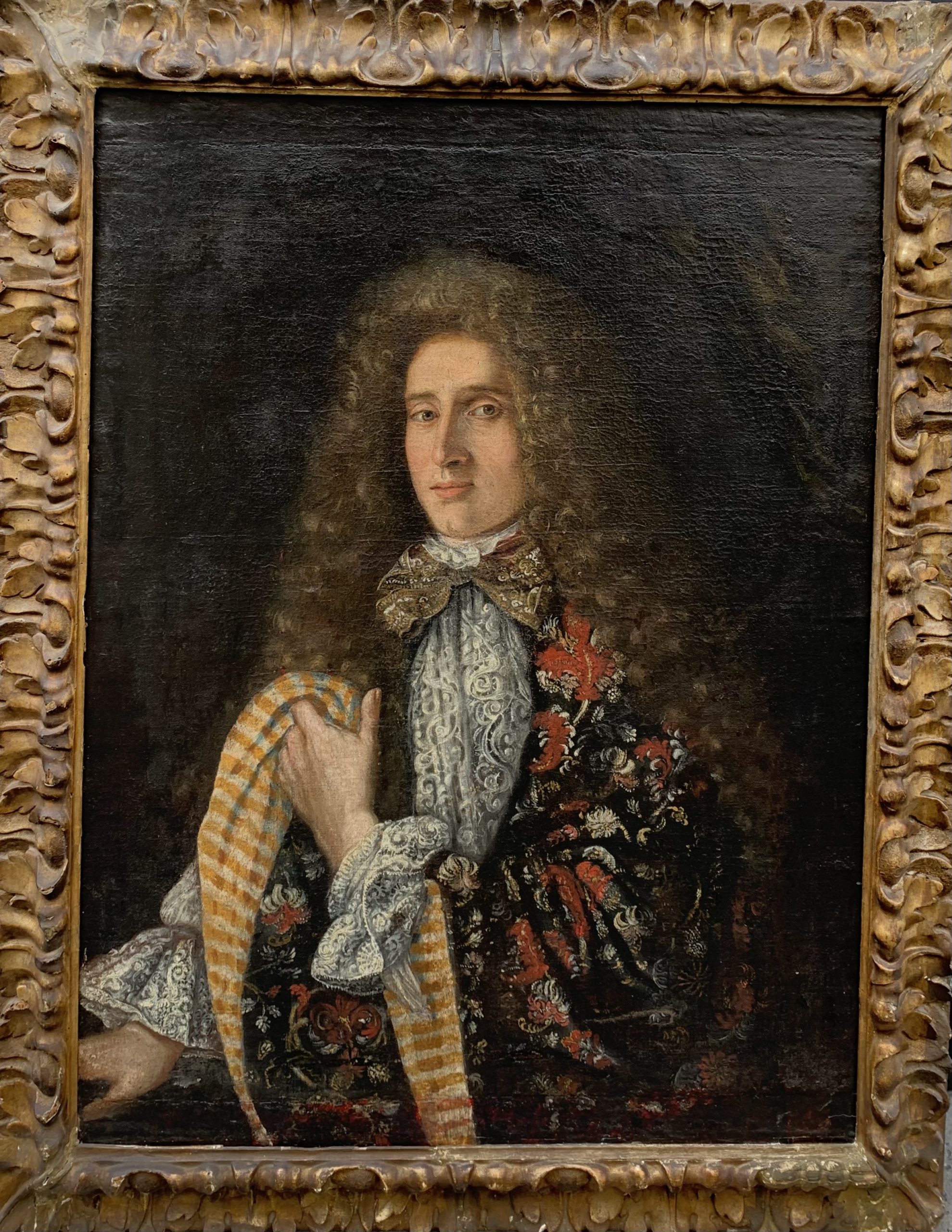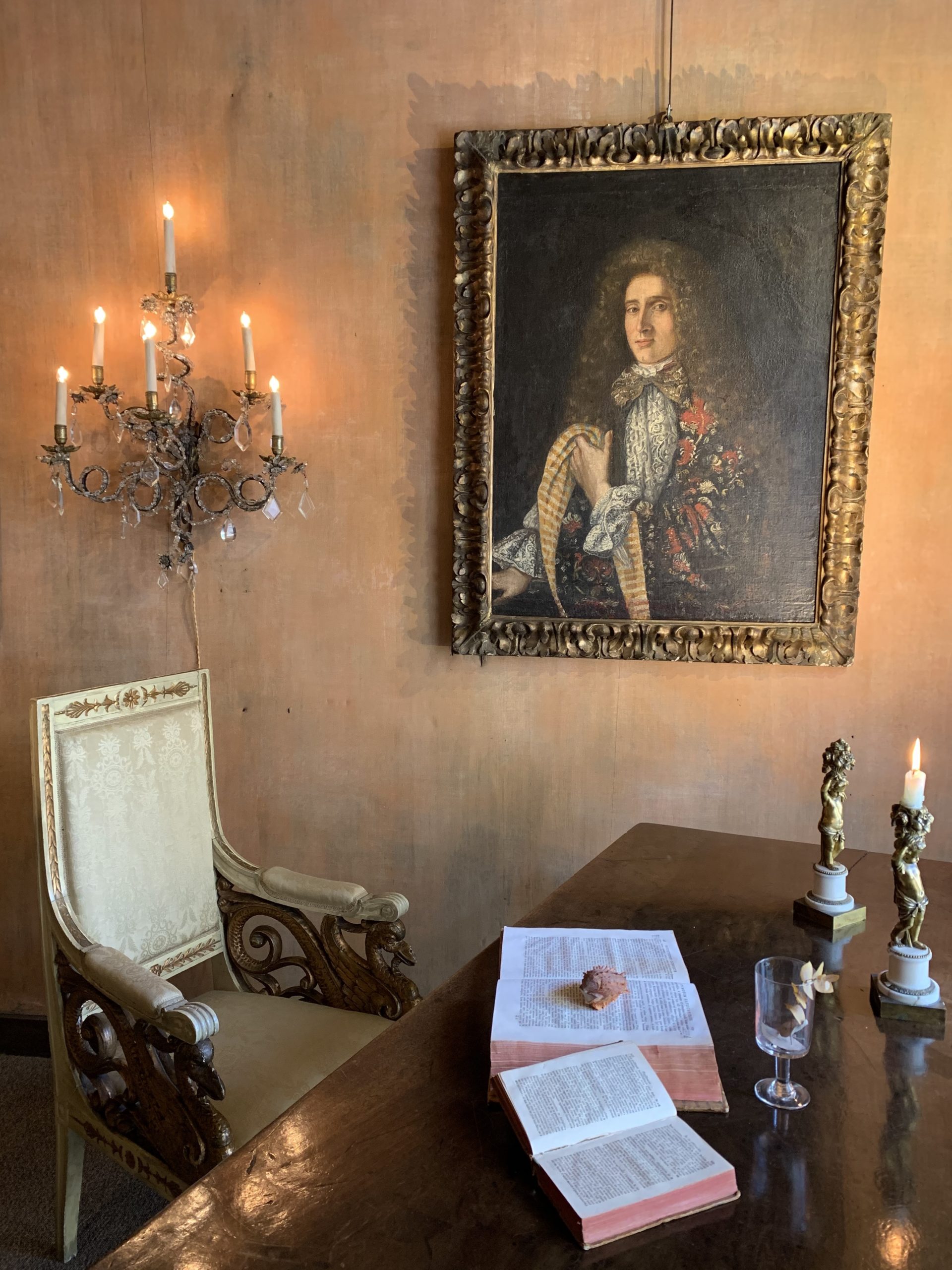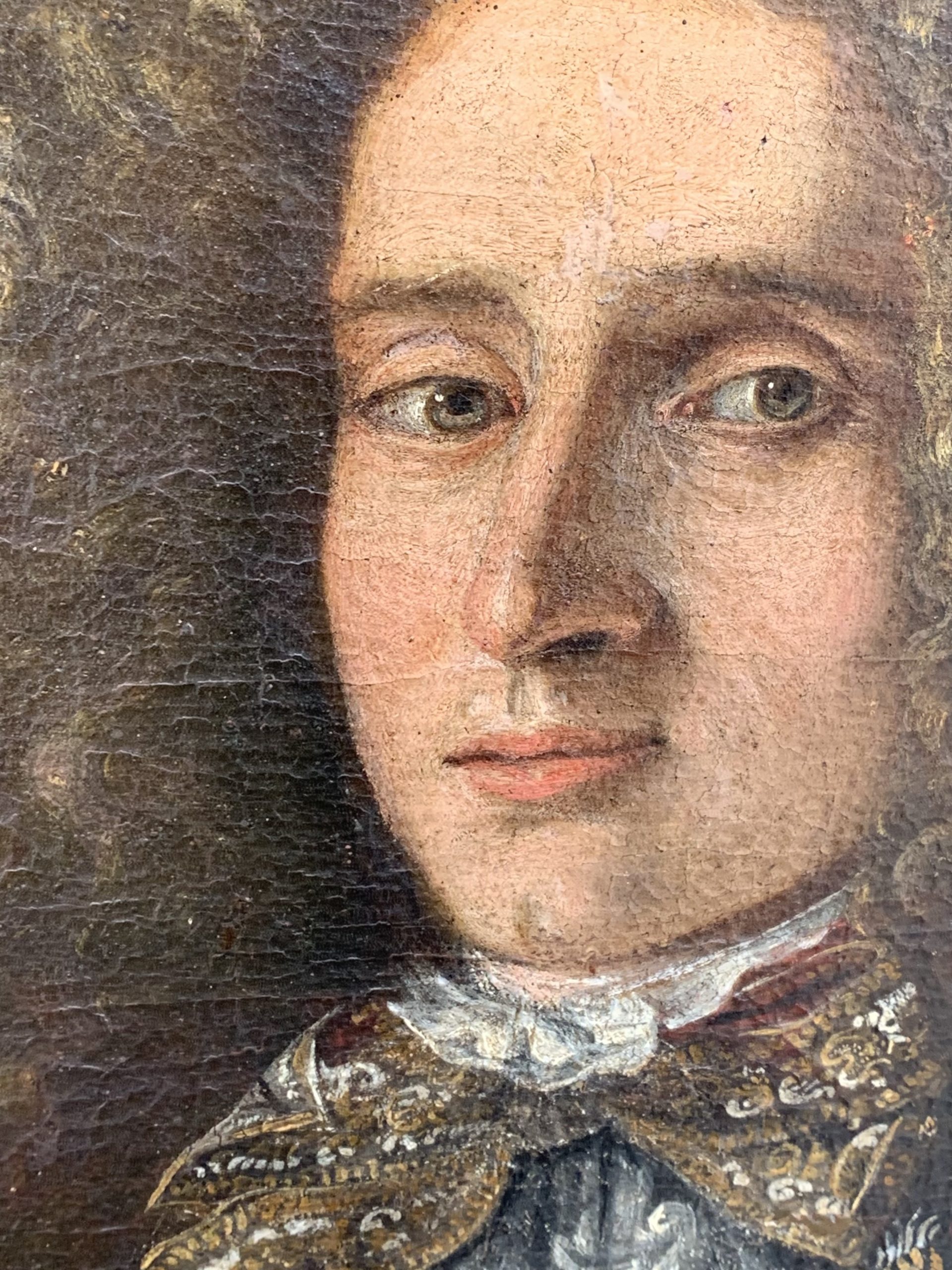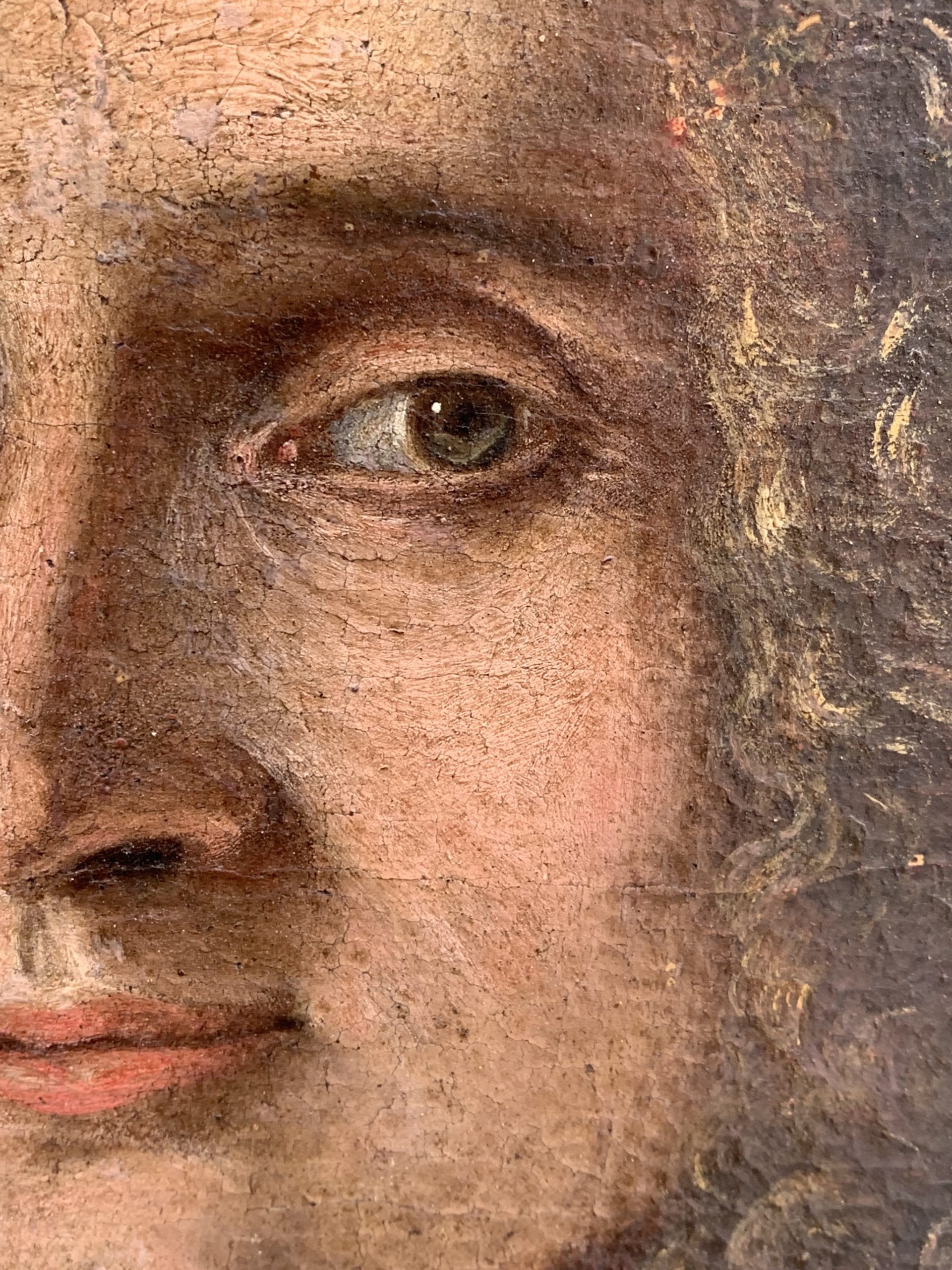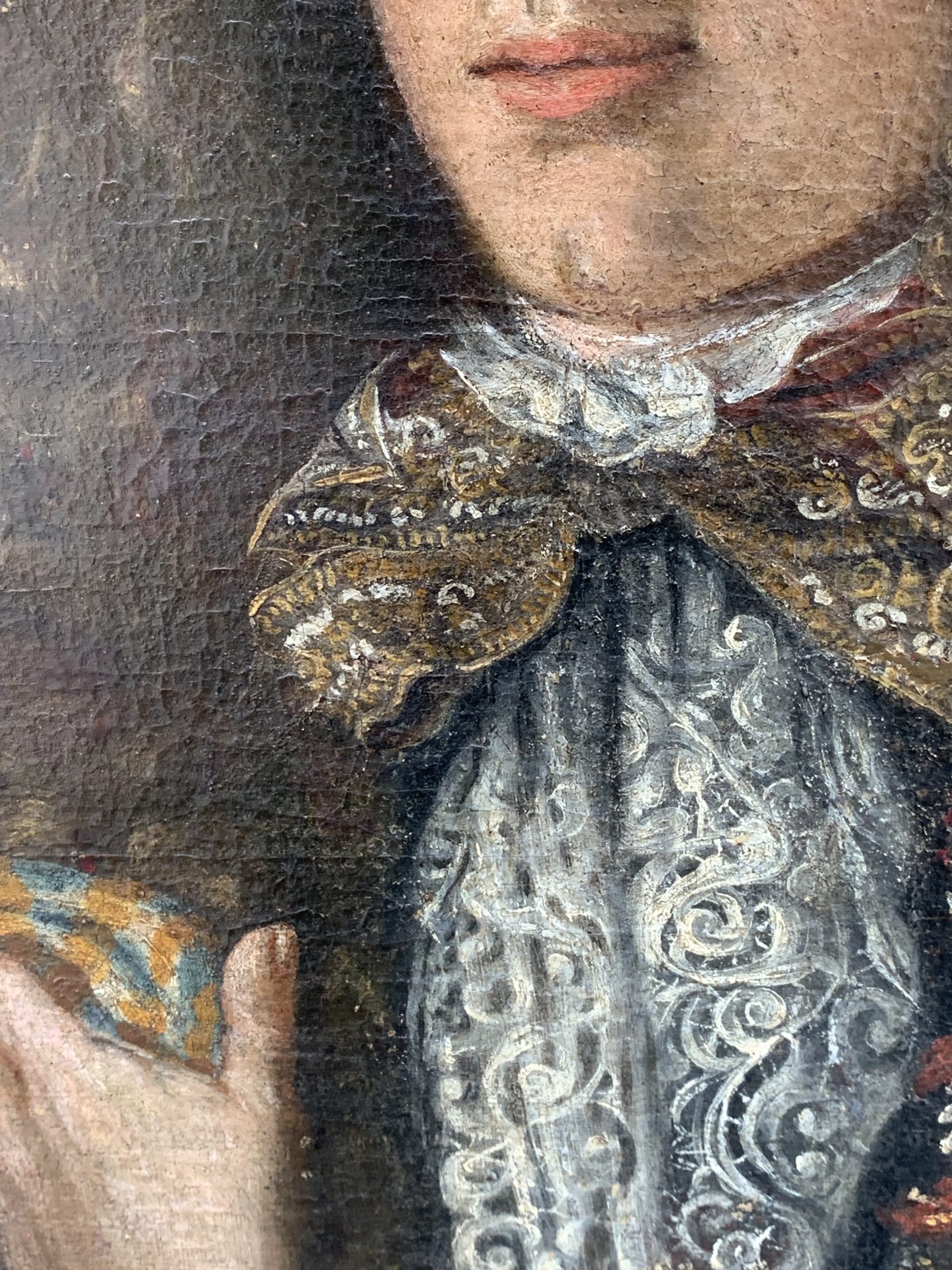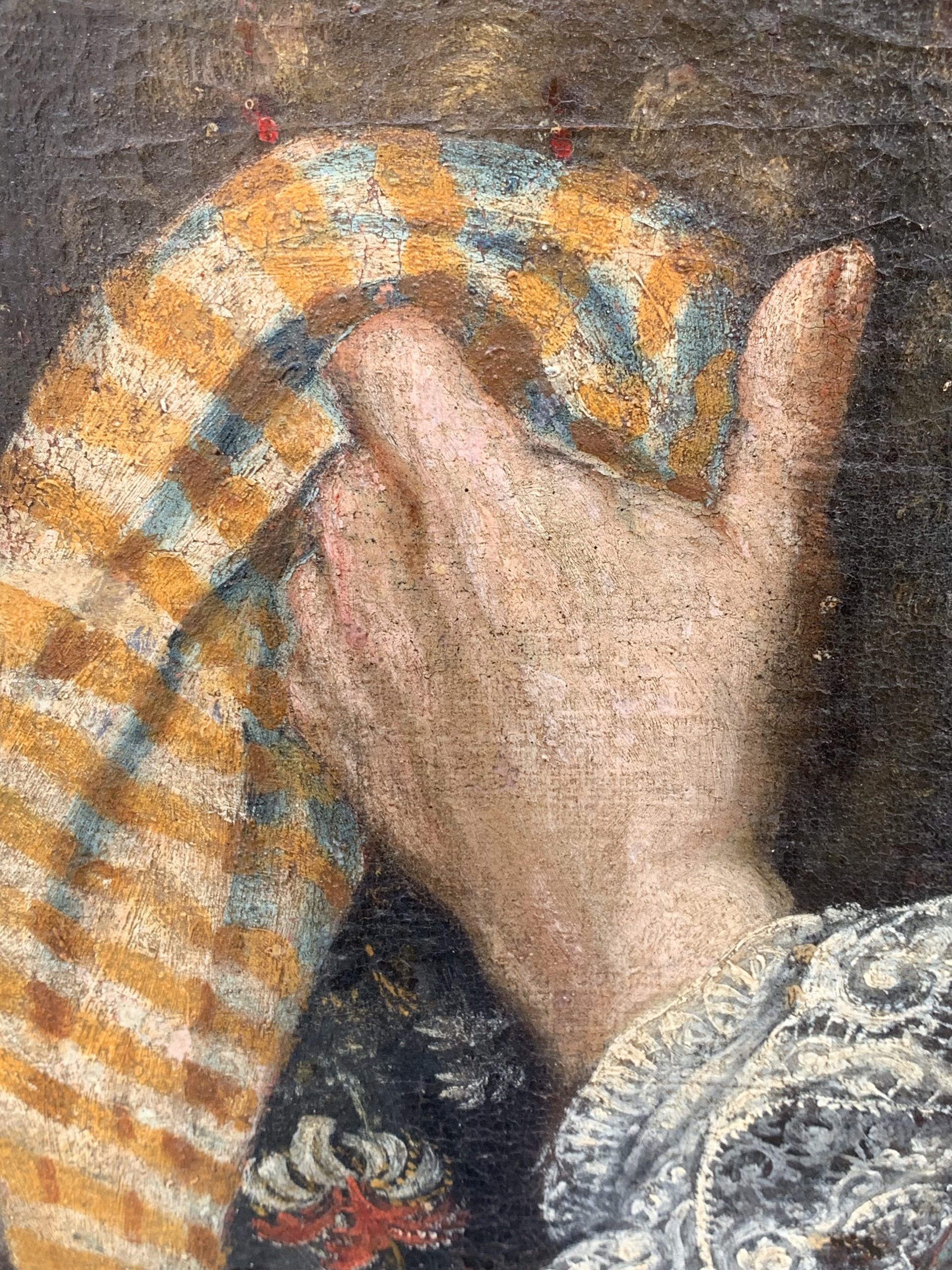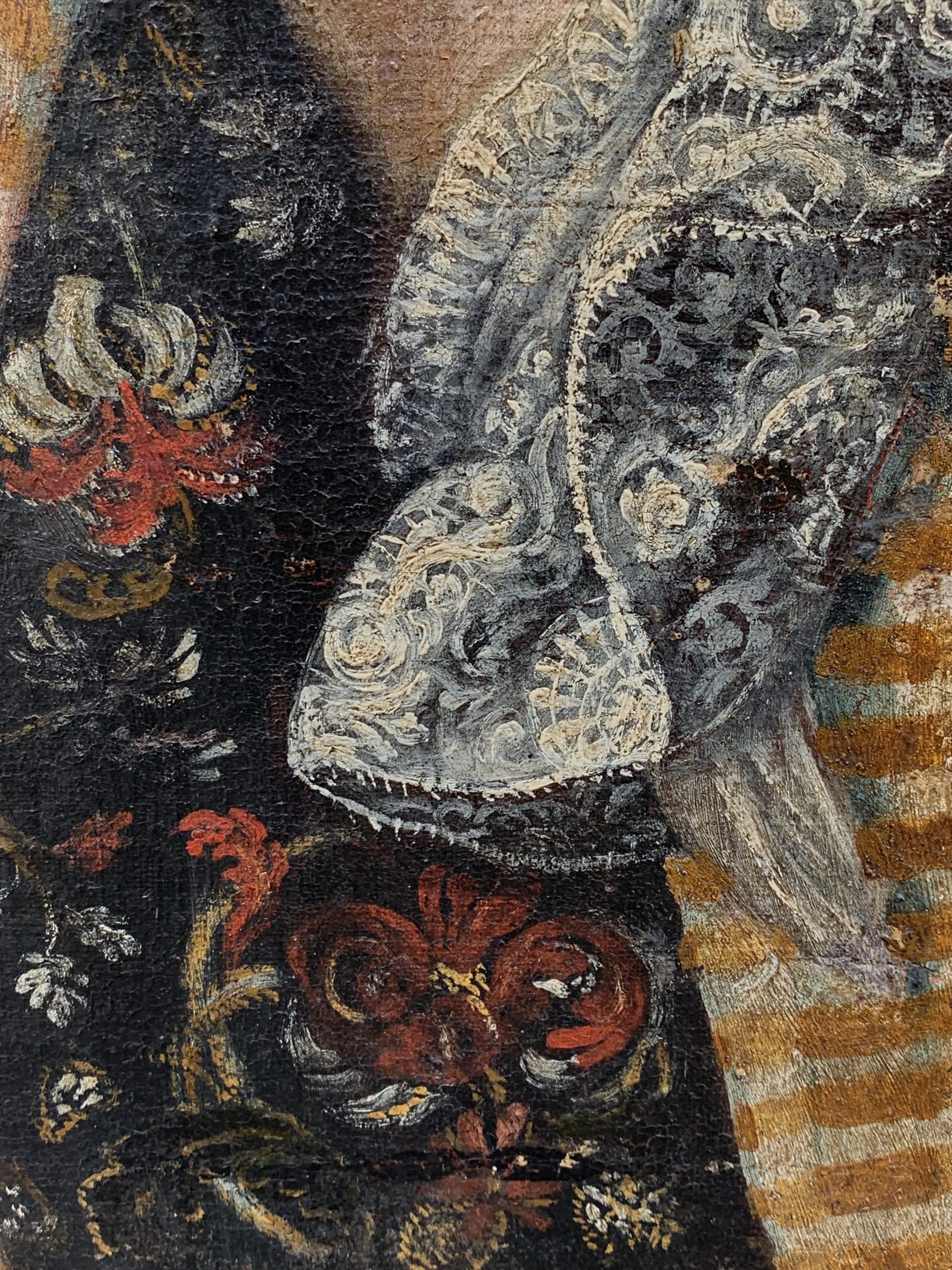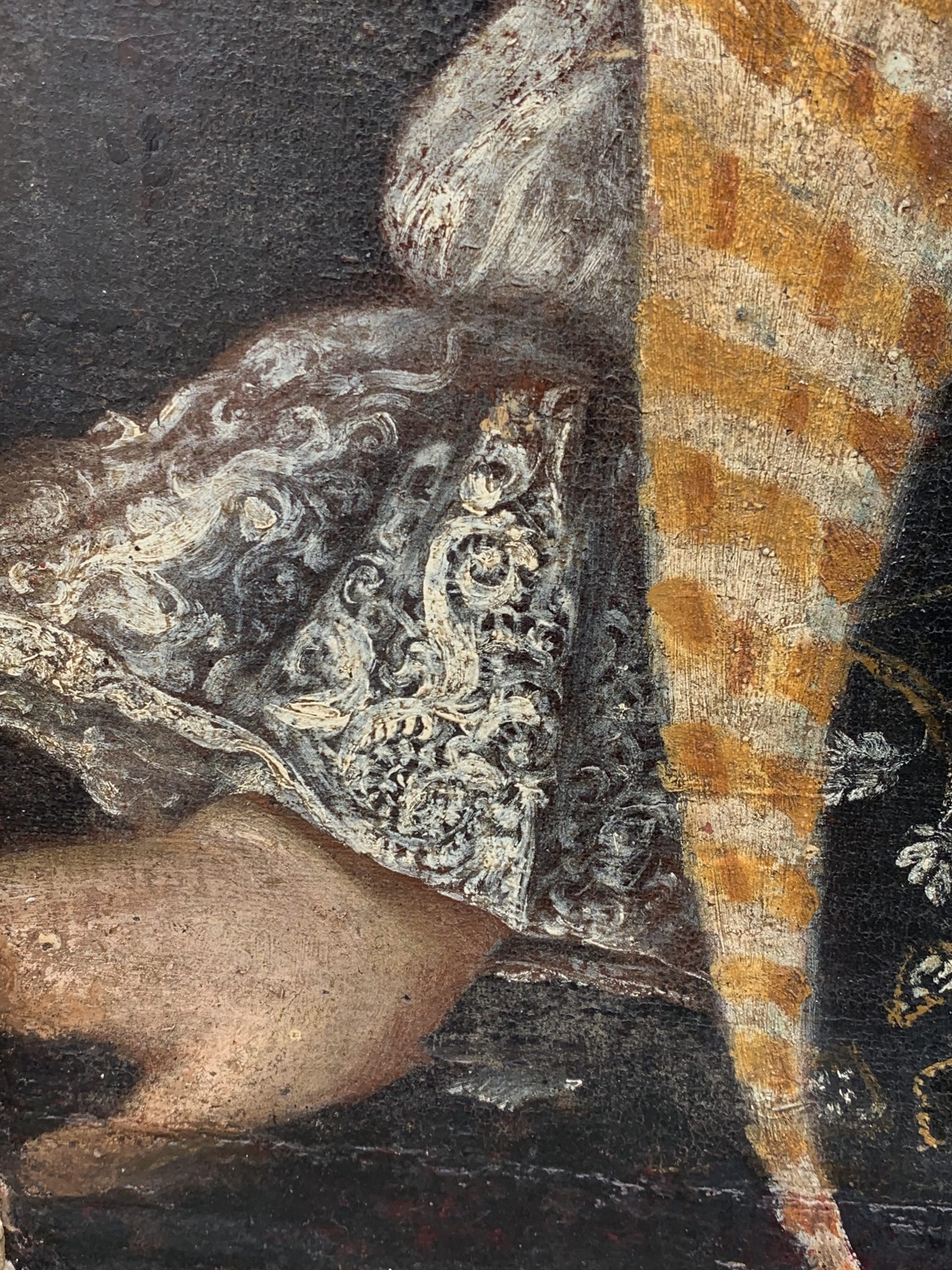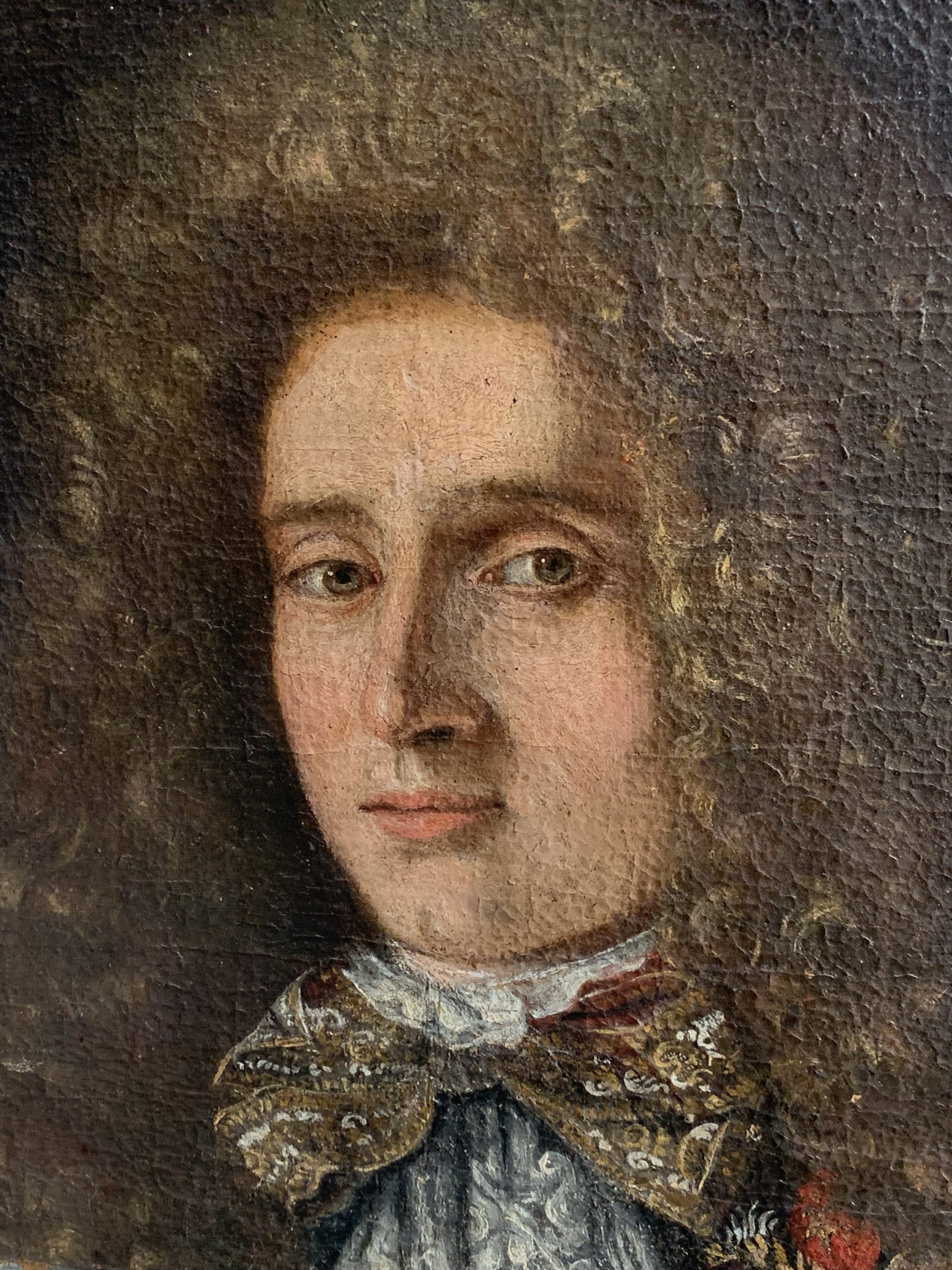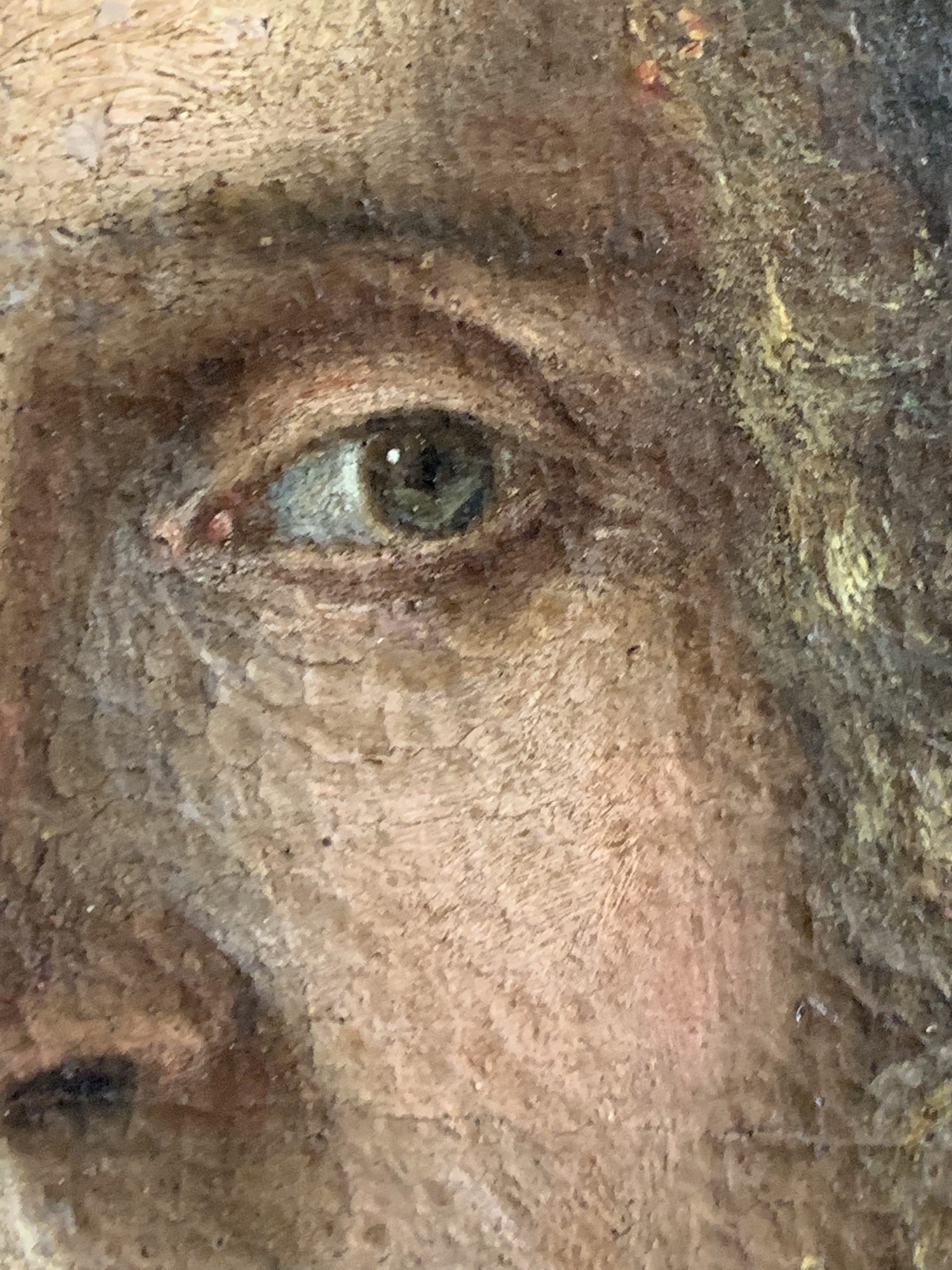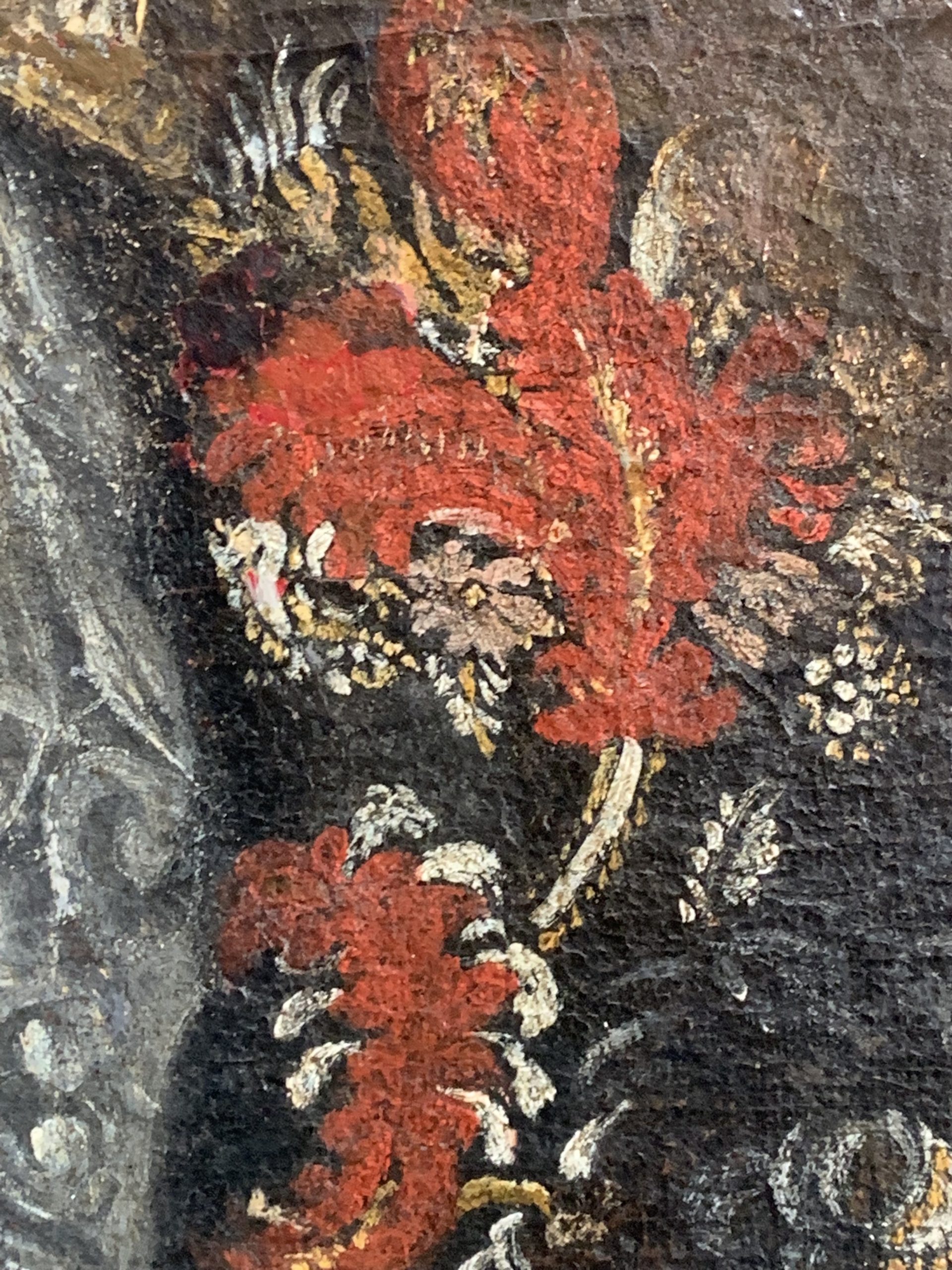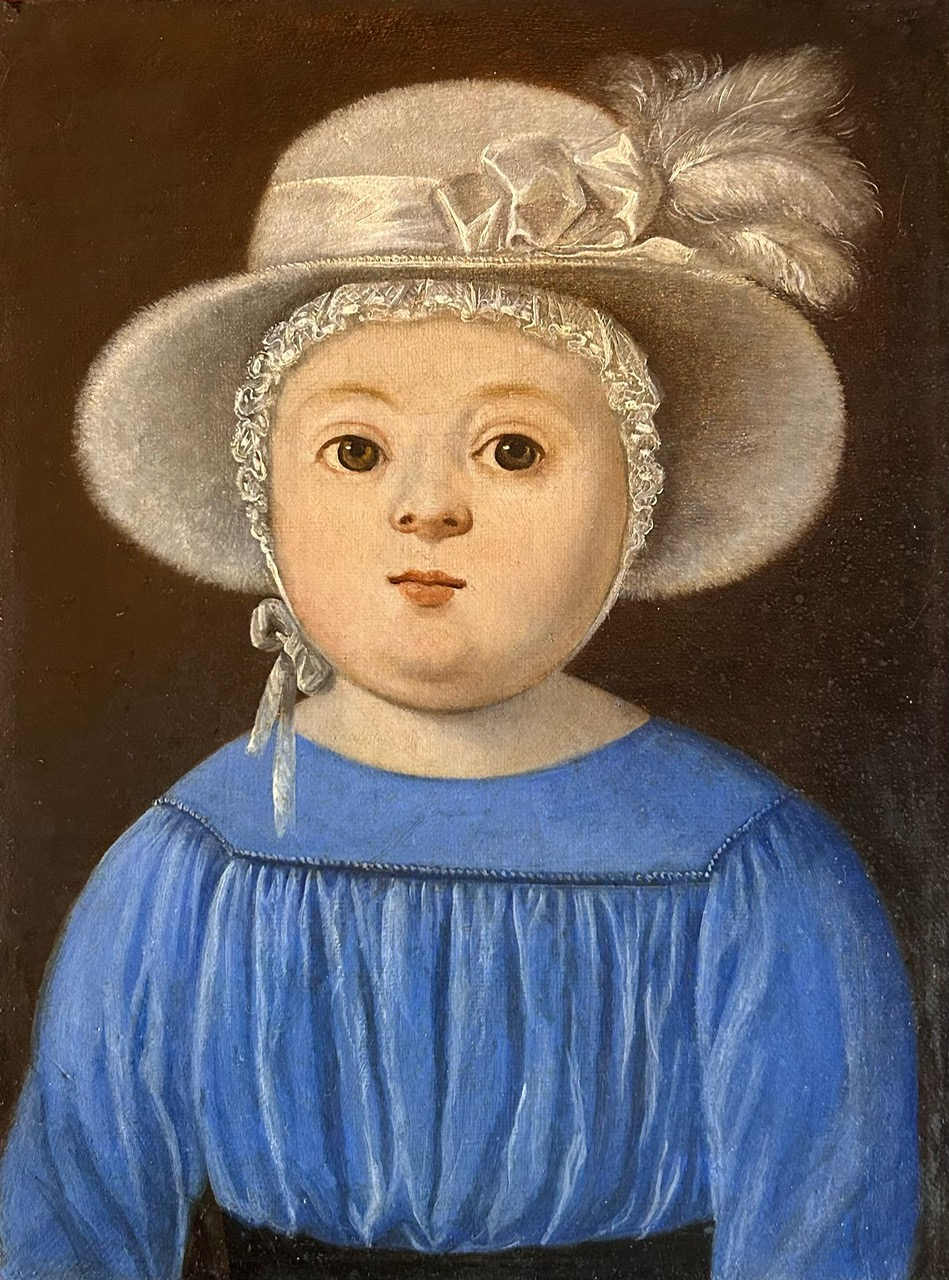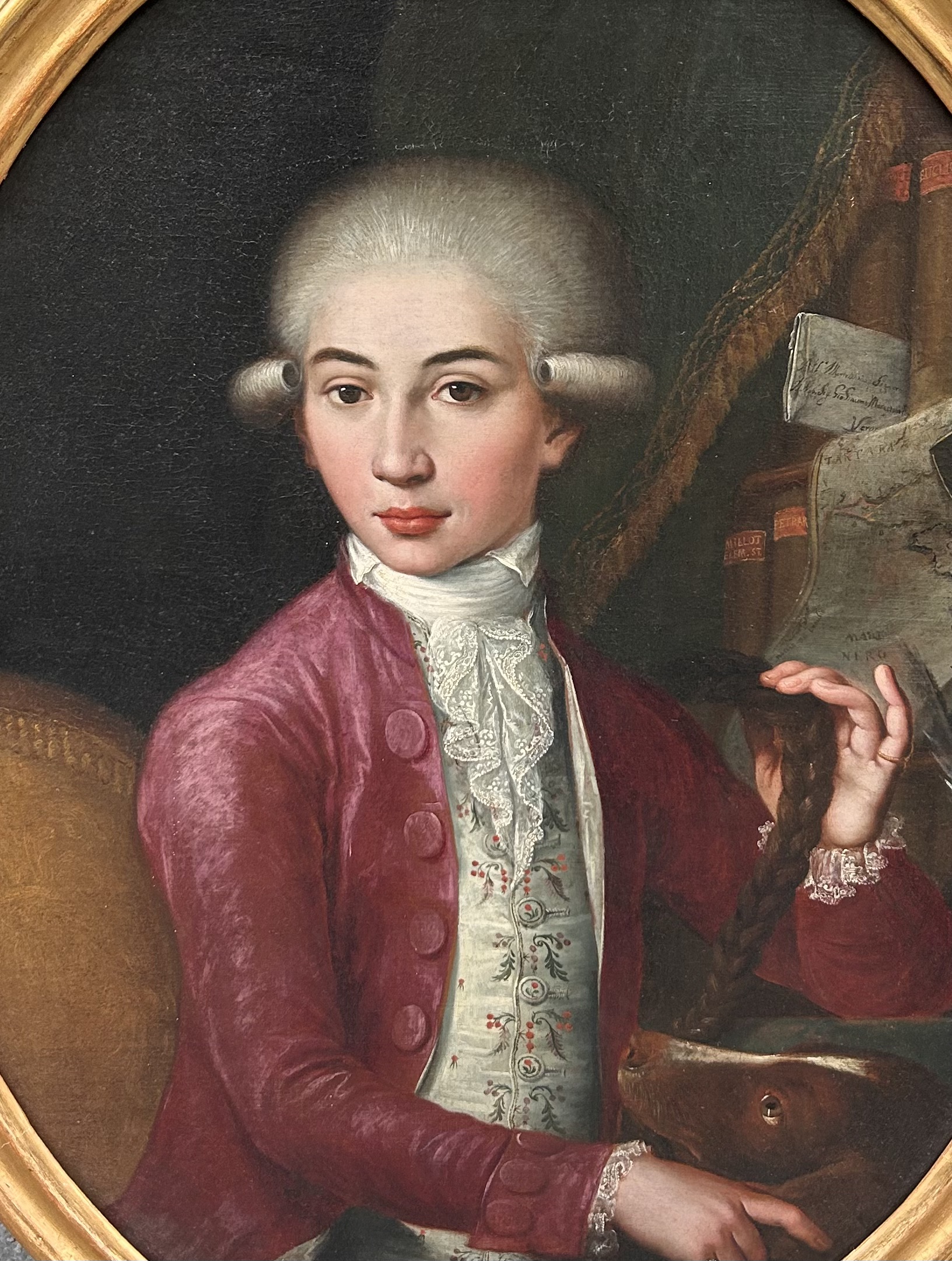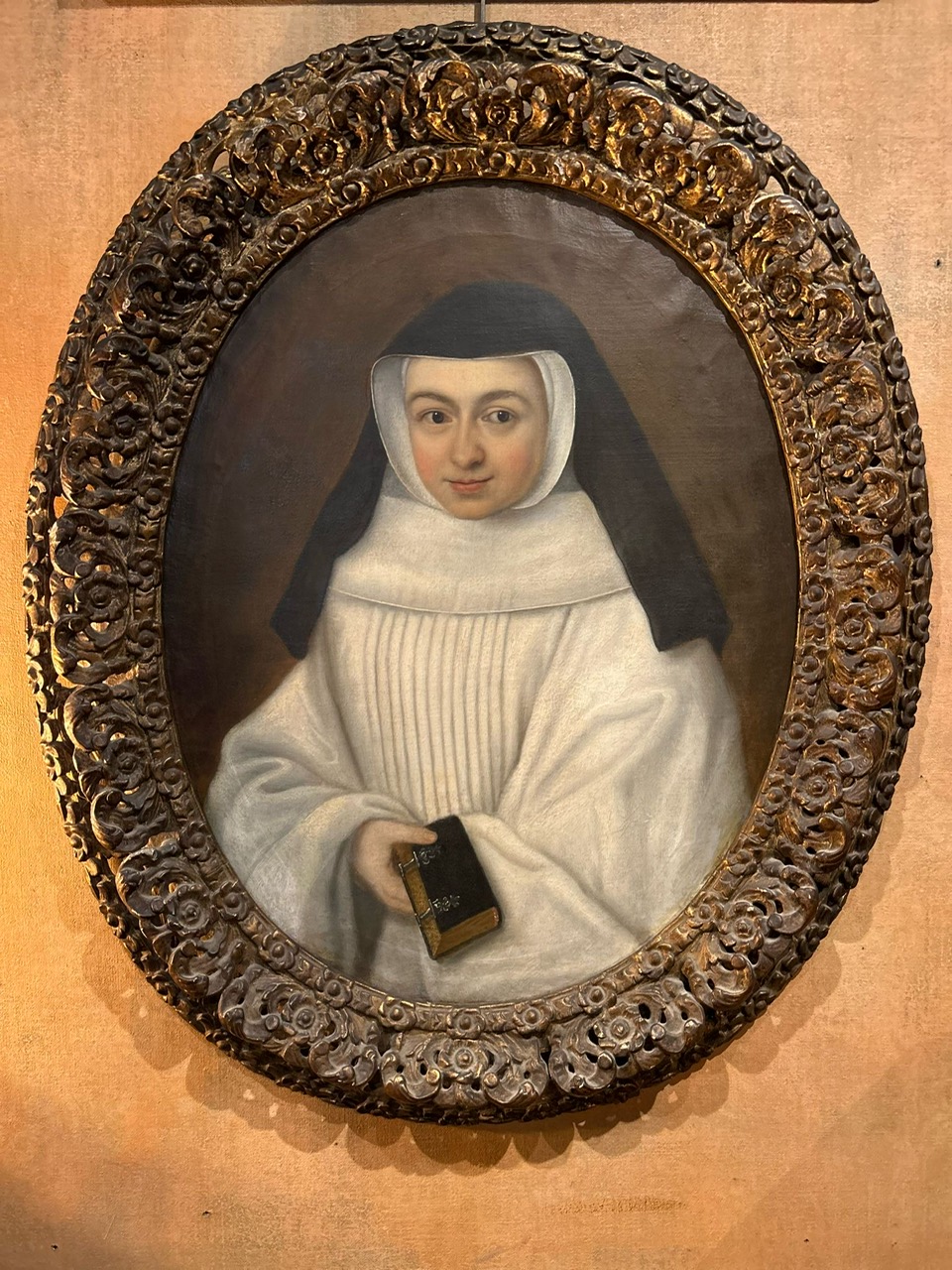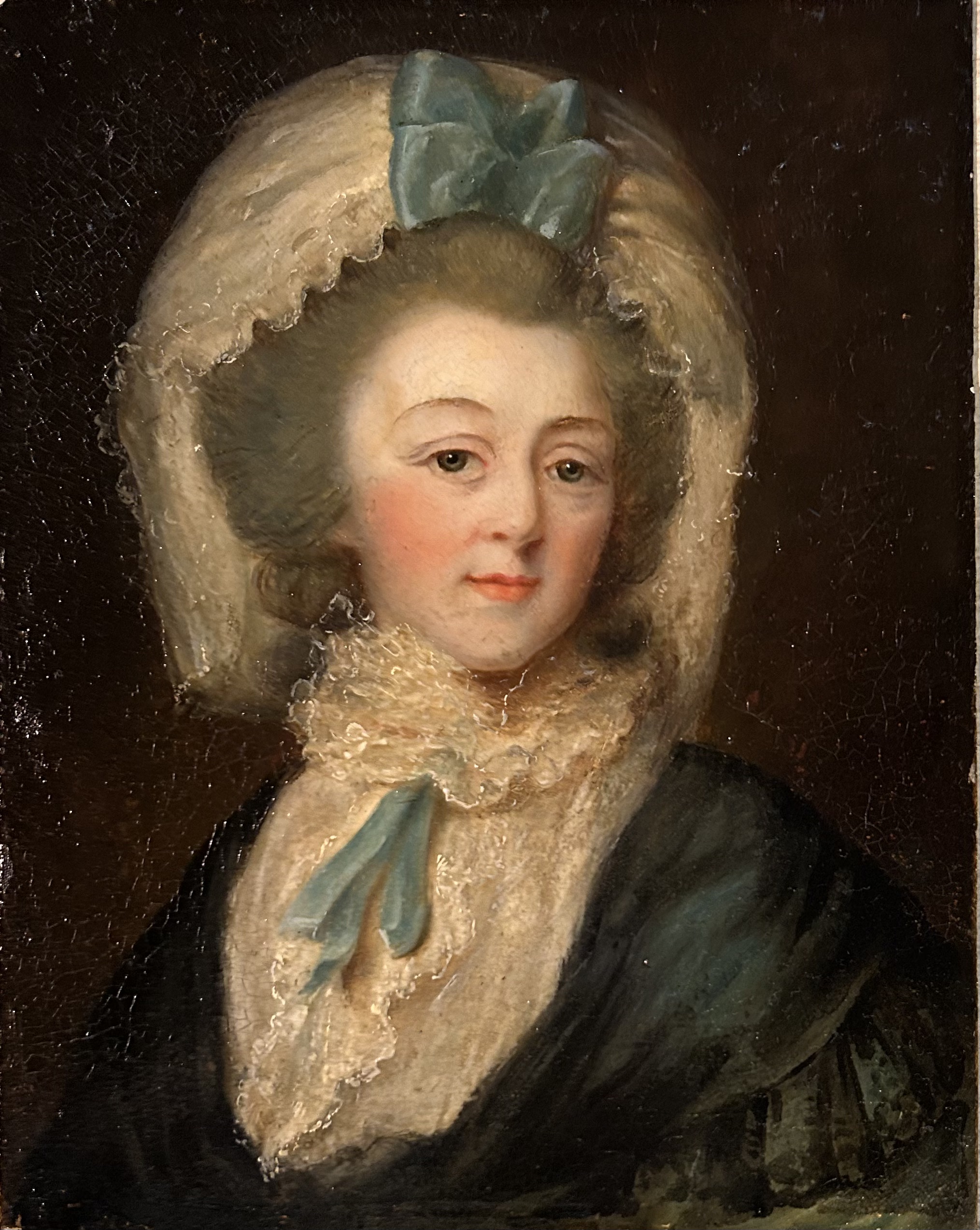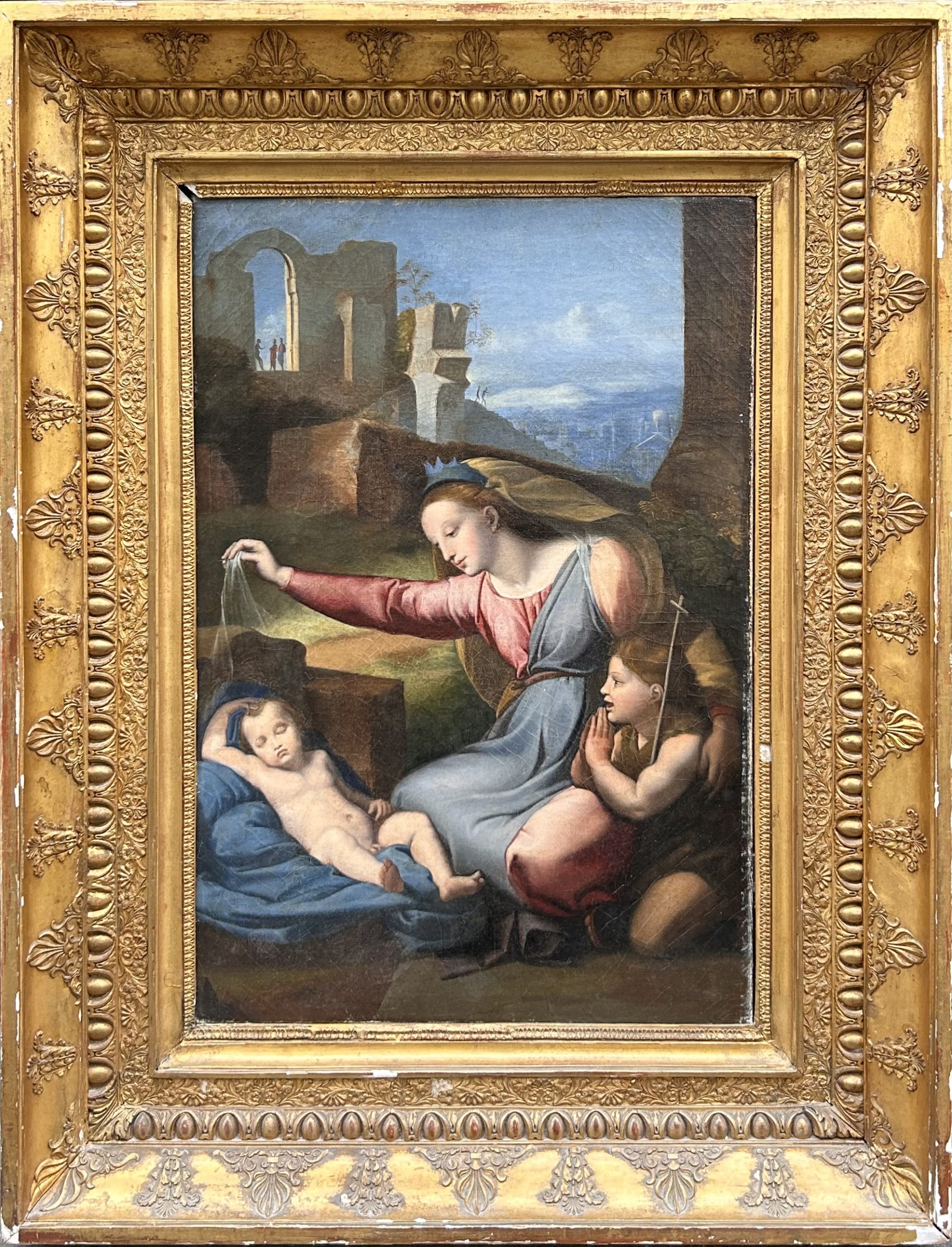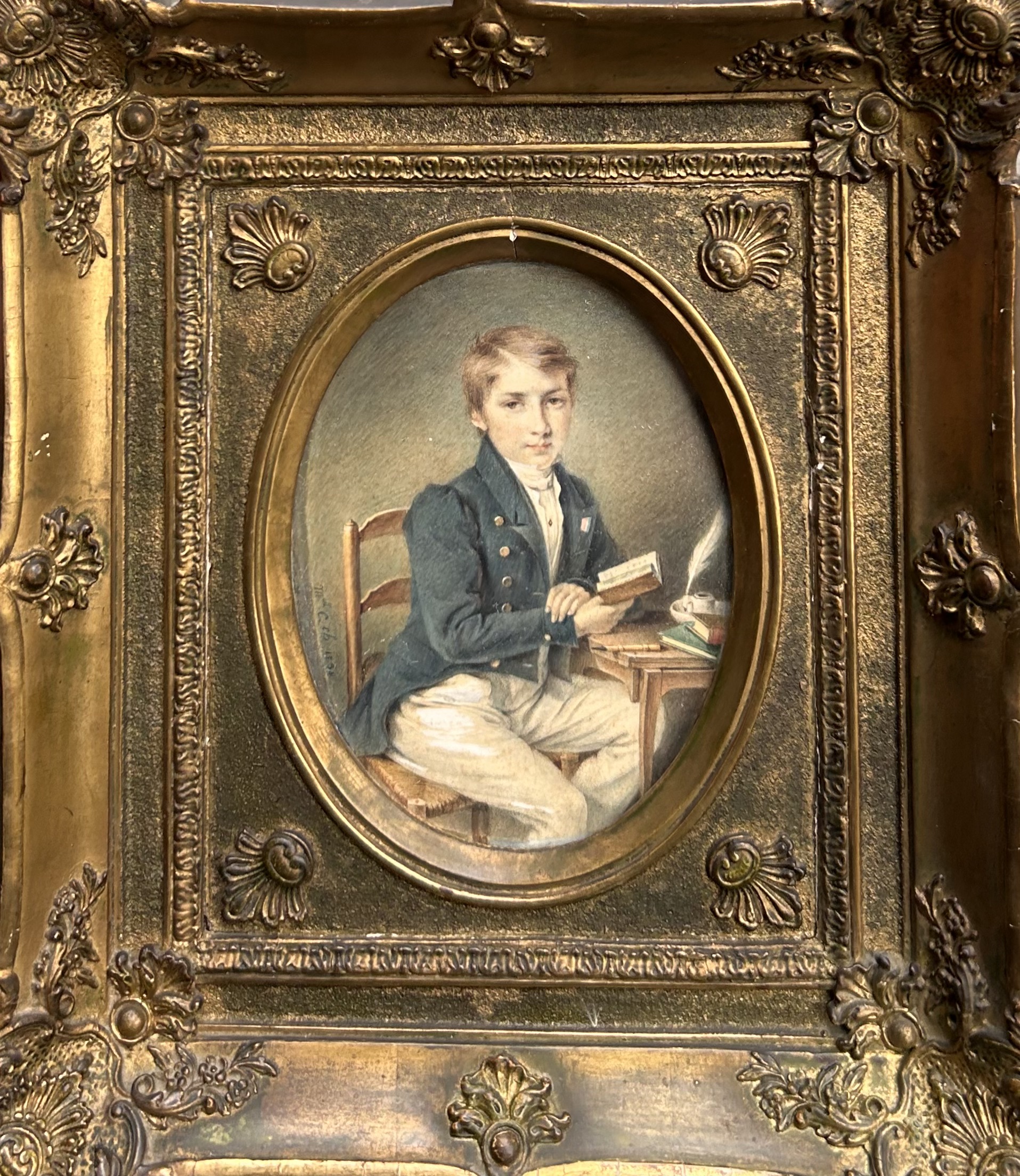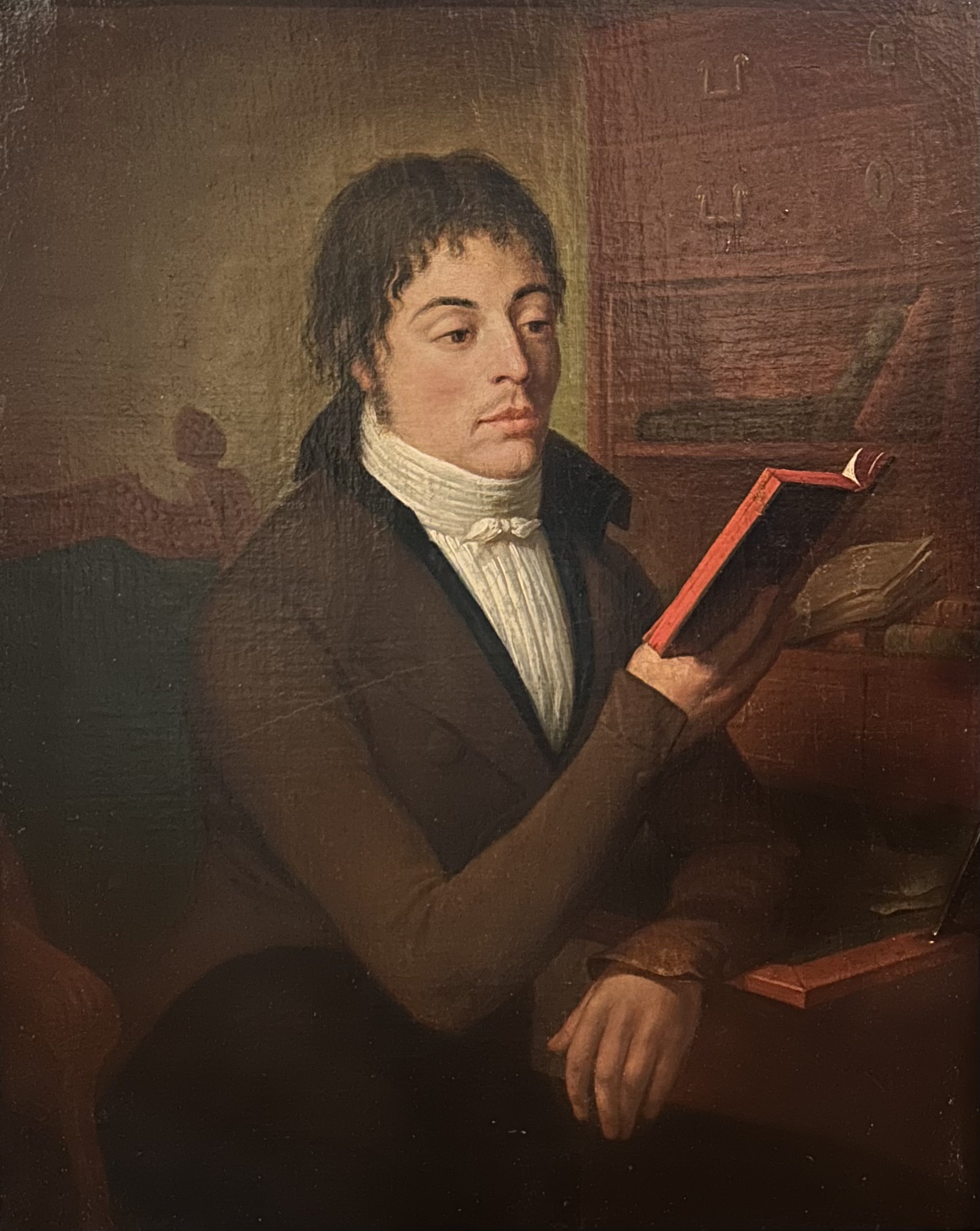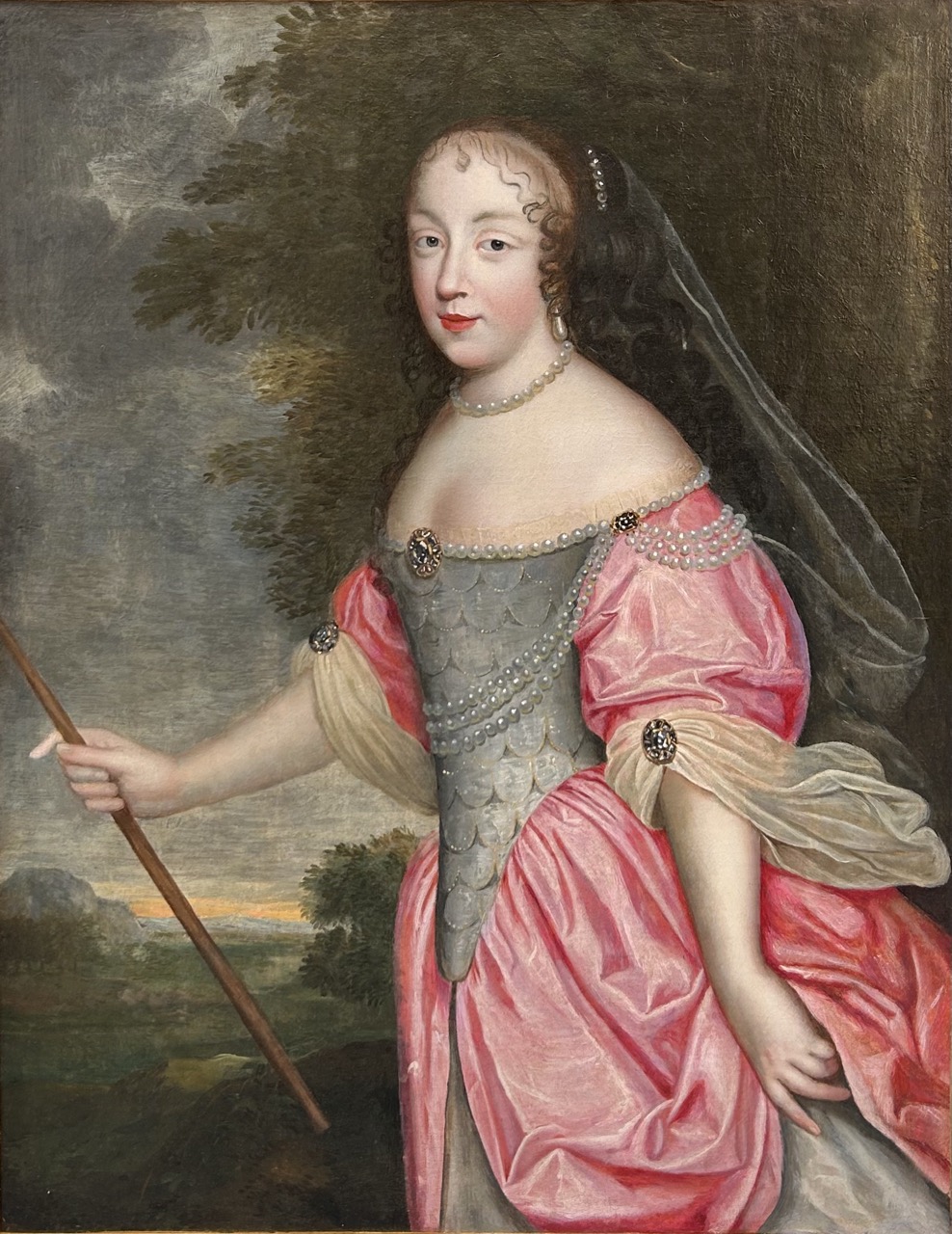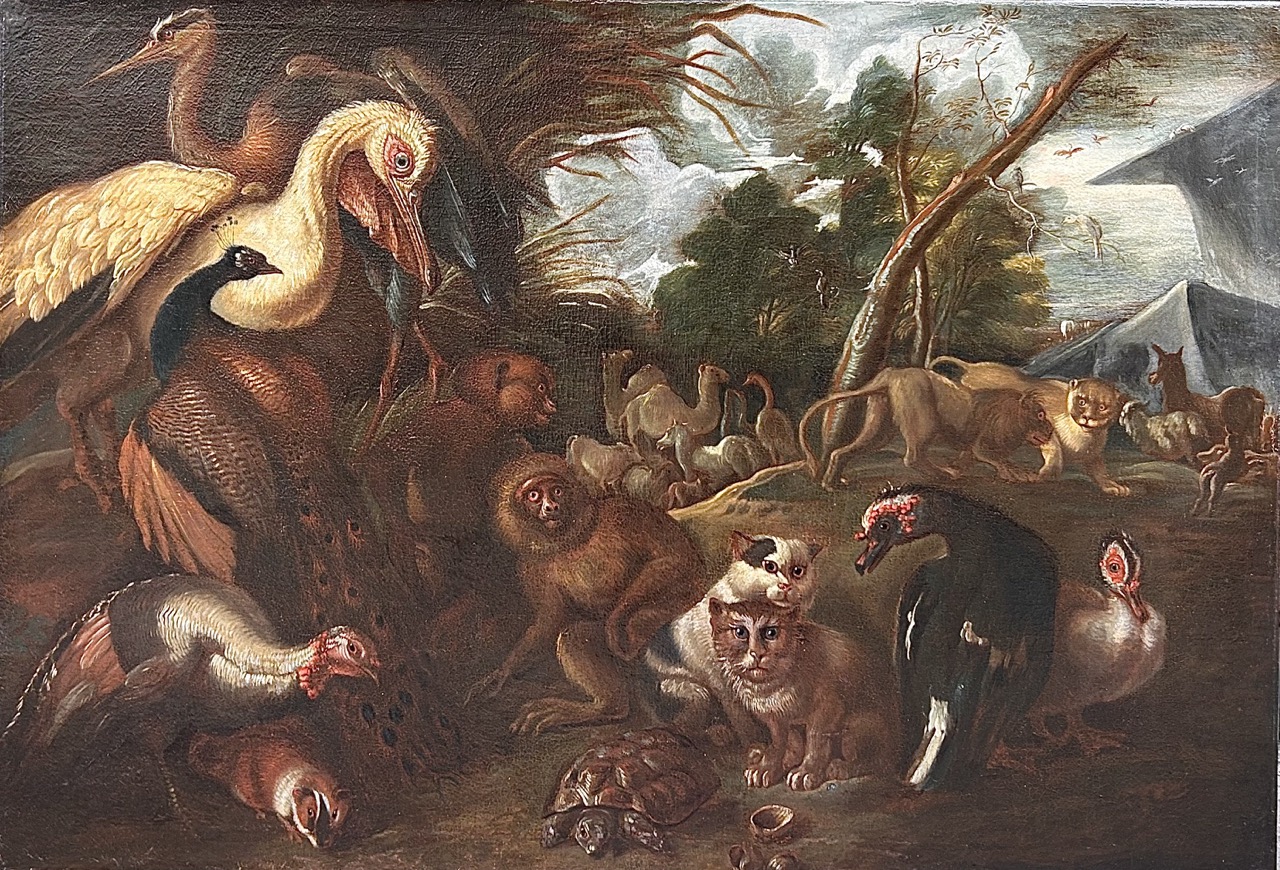Oil on canvas, portrait of a gentleman, old relining, original carved wooden frame.
Increasingly appreciated in the second half of the 17th century, dressing gowns in the shape of a cotton canvas kimono called Indian in France in reference to the origin of their painted and dyed fabrics in India and brought back by the companies of the East Indies. . Dressing gowns are made for elegant adults only. The Indian dressing gown was mentioned by the Bourgeois gentilhomme of Molière; dressed in such a garment, the latter proudly exclaims “I got this Indian made for myself.” In the 18th century it became quite common for aristocrats to pose in front of an artist in a dressing gown. These portraits exude various feelings of ease, comfort, but also power and majesty. Because to be represented thus dressed requires a certain freedom of spirit and a great assurance.
From 1660 Europe became enthusiastic about Indian textiles. Their use in furnishing and clothing was essential in the well-to-do circles and the “Indians” constituted up to three-quarters of the goods coming from India. The reason for their success is above all due to the raw material from which they were made: cotton until then almost unknown in Europe, whose fineness, lightness, easy washing, hygienic character, low price and colorful floral patterns. shimmering colors ensured the triumph. The Provencal market will always remain the most important, the Provencal people making great use of it. The second reason for the success of the “Indiennes” resided in the use of painting techniques and especially of printing on fabric, of which Europe had hitherto ignored the principle of fixation. Deliciously exotic, they were painted with two dominant colors, red, taken from madder root and blue, extracted from the indigo tree.
Attentive to the question of textiles, Colbert was interested in the efforts of his predecessors at the time of Henri IV, to develop the culture of silk and in 1664 he created the Compagnie des Indes Orientales which strongly developed the vogue for Indian women in France. The upper bourgeoisie then tore off these fabrics, Madame de Sévigné launched fashion at the court of Louis XIV. As early as 1672, with the support of Colbert, a colony of Armenian traders and technicians whose expertise has been recognized for centuries was brought to Marseilles, and this was the starting point for the European impression. Soon England (c. 1670) and the Netherlands (1678) set up their first factories. In France, the boom was quickly shattered.
The protests of silk workers and woolen grew from 1681 when several Lyon workshops had to stop. But the situation becomes more acute with the revocation of the Edict of Nantes in 1685 which causes a flight of money and skills out of the kingdom. To fight against the economic crisis that took hold, in October 1686 the royal power ordered a ban on the import, manufacture and use of printed or painted canvases. The objective is to put an end to the popularity of Indian women and to protect the major French textile industries of linen, silk and wool, these well-established and highly exporting activities, Prohibition would not be abolished until 1759, 74 years later! The East India Company was allowed to continue trading in white cottons in the kingdom. It was able to continue that of colored and printed cottons on the sole condition of re-exporting them outside France. It is the African market which provides its outlet. A large number of Indienners then retreated to Avignon, a papal possession unaffected by the edict. Tuscany is also a land of welcome. Our portrait probably represents a young Tuscan, which is underlined by the red fleur-de-lis (symbol of Florence) on his fabrics. The striped fabric between her hands is reminiscent of the fabric of the sleeves of Marie de Medicis’ dress on several of her young portraits.
Remarkable painting for lovers of old fabrics, and provocative looks, to look at it is to plunge into a world where everything is only “luxury, calm and pleasure”.
Circa 1700,
Italy.
Height: 120 cm (47,2 in)
Width: 93 cm (36,6 in)
Depth: 6 cm (2,6 in)

